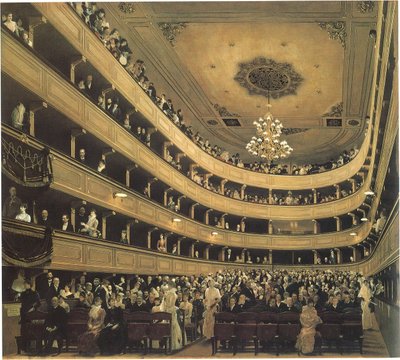Gustav Klimt once said about himself: "There is nothing special about me. I am a painter who paints day after day from morning to night. If you ever want to know anything about me, you should take a close look at my paintings." In fact, Klimt, who liked to paint dressed only in sandals and a caftan, played a decisive role in the development of the Austrian art scene and is today one of the most famous painters in the country. His paintings, which can be ascribed to Viennese Art Nouveau, are full of symbolism. His preferred theme was the female body and an open representation of sexuality, which was perceived as provocative in his time. Klimt was of the opinion that every form of art has something erotic about it. He is said to have had numerous affairs, including with many of the women he portrayed for his clients. However, he was always extremely discreet.
Klimt was born as the second of seven children. The father was a moderately successful gold engraver, so the family lived in very poor circumstances. At the age of 14 Klimt was able to enroll in the Vienna School of Applied Arts with a scholarship. Among his teachers were Victor Berger and Michael Rieser. He admired Hans Makart, one of the leading history painters of the 19th century. One year after his enrollment, his younger brother Georg Klimt also attended the School of Applied Arts. Together with their student friend Franz Matsch, the two brothers founded a studio community in 1888 and accepted many commissions for churches and other public buildings. Klimt's father and his brother Ernst died in 1892. The sudden death of both of them and the financial responsibility he now had to bear towards his family and that of his brother also affected Klimt's style. While some of his earlier works still showed academic traits, his later paintings became more modern and critical. The earliest work from Klimt's famous Golden Phase was "Pallas Athene". In the years that followed, gold was to play a central role and be the dominant element in his works, as in the famous works "The Kiss" or "Adele Bloch-Bauer".
The professional collaboration between Klimt and Matsch ended in 1894 when the two were commissioned to paint ceiling paintings for the new university in Vienna. Klimt's proposals for the faculty paintings did not correspond to the conservative ideas and were strictly rejected as they were too pessimistic and pornographic. Matsch's proposals, however, were better received by the faculty members. Klimt's faculty painting "Philosophy" was awarded a gold medal at the Paris World Exhibition. In Vienna, however, this did not make much of an impression. As a consequence, Klimt left the Cooperative of Visual Artists and became a founding member and first president of the Vienna Secession, which was to be a platform for unconventional and international artists. Klimt suffered a stroke and died the same year of pneumonia.
×





.jpg)
.jpg)
.jpg)
.jpg)
.jpg)
.jpg)
.jpg)
.jpg)
.jpg)
.jpg)
.jpg)
.jpg)
.jpg)
.jpg)
 - (MeisterDrucke-16196).jpg)
 - (MeisterDrucke-16196).jpg)
.jpg)
.jpg)
.jpg)
.jpg)
.jpg)
.jpg)
.jpg)
.jpg)
.jpg)
.jpg)
.jpg)
.jpg)
.jpg)
.jpg)
 c1905-09 (tempera wc) - (MeisterDrucke-73796).jpg)
 c1905-09 (tempera wc) - (MeisterDrucke-73796).jpg)
.jpg)
.jpg)
.jpg)
.jpg)
_-_(MeisterDrucke-695778).jpg)
_-_(MeisterDrucke-695778).jpg)
.jpg)
.jpg)
.jpg)
.jpg)
.jpg)
.jpg)
.jpg)
.jpg)
.jpg)
.jpg)
.jpg)
.jpg)
.jpg)
.jpg)
_1912-13_(sanguine_on_paper)_-_(MeisterDrucke-636270).jpg)
_1912-13_(sanguine_on_paper)_-_(MeisterDrucke-636270).jpg)
.jpg)
.jpg)
 - (MeisterDrucke-103105).jpg)
 - (MeisterDrucke-103105).jpg)
.jpg)
.jpg)
.jpg)
.jpg)
.jpg)
.jpg)
.jpg)
.jpg)
.jpg)
.jpg)
.jpg)
.jpg)
.jpg)
.jpg)
.jpg)
.jpg)
.jpg)
.jpg)
.jpg)
.jpg)
.jpg)
.jpg)
.jpg)
.jpg)
.jpg)
.jpg)
.jpg)
.jpg)
.jpg)
.jpg)
.jpg)
.jpg)
.jpg)
.jpg)
.jpg)
.jpg)
.jpg)
.jpg)
.jpg)
.jpg)
.jpg)
.jpg)
.jpg)
.jpg)
 c1905-09 (tempera wc) (see 259350 for detail) - (MeisterDrucke-51700).jpg)
 c1905-09 (tempera wc) (see 259350 for detail) - (MeisterDrucke-51700).jpg)
_detail_of_the_left_hand_side_c1905-09_(tempera_wa_-_(MeisterDrucke-1102146).jpg)
_detail_of_the_left_hand_side_c1905-09_(tempera_wa_-_(MeisterDrucke-1102146).jpg)
.jpg)
.jpg)
.jpg)
.jpg)
.jpg)
.jpg)
.jpg)
.jpg)
.jpg)
.jpg)
.jpg)
.jpg)
.jpg)
.jpg)
.jpg)
.jpg)
.jpg)
.jpg)
.jpg)
.jpg)
.jpg)
.jpg)
.jpg)
.jpg)
.jpg)
.jpg)
.jpg)
.jpg)
.jpg)
.jpg)
.jpg)
.jpg)
.jpg)
.jpg)
.jpg)
.jpg)
.jpg)
.jpg)
.jpg)
.jpg)
_Painting_by_-_(MeisterDrucke-1022036).jpg)
_Painting_by_-_(MeisterDrucke-1022036).jpg)
.jpg)
.jpg)


.jpg)
.jpg)
 - (MeisterDrucke-16158).jpg)
 - (MeisterDrucke-16158).jpg)
.jpg)
.jpg)
.jpg)
.jpg)
.jpg)
.jpg)
.jpg)
.jpg)
.jpg)
.jpg)
.jpg)
.jpg)
.jpg)
.jpg)
.jpg)
.jpg)
.jpg)
.jpg)
.jpg)
.jpg)
_-_(MeisterDrucke-1028245).jpg)
_-_(MeisterDrucke-1028245).jpg)
.jpg)
.jpg)
.jpg)
.jpg)
.jpg)
.jpg)
.jpg)
.jpg)
.jpg)
.jpg)
.jpg)
.jpg)
.jpg)
.jpg)
.jpg)
.jpg)
.jpg)
.jpg)
.jpg)
.jpg)
.jpg)
.jpg)






